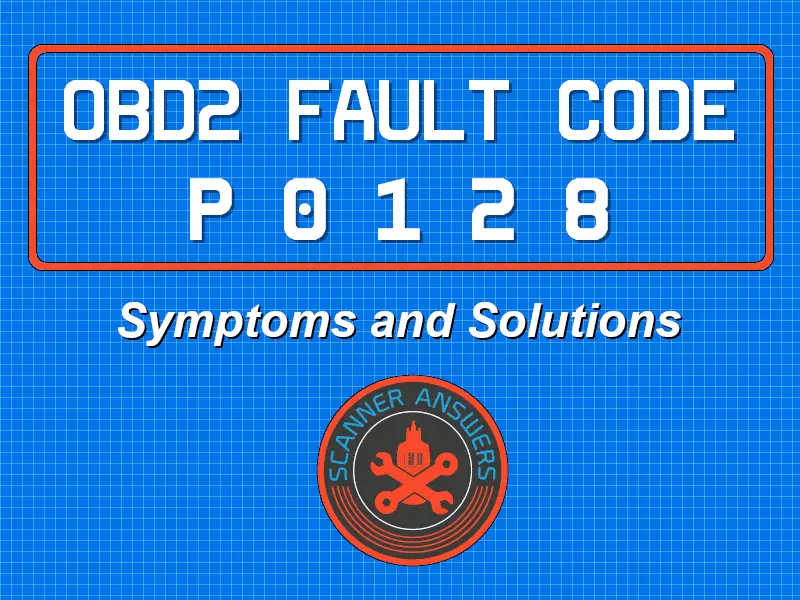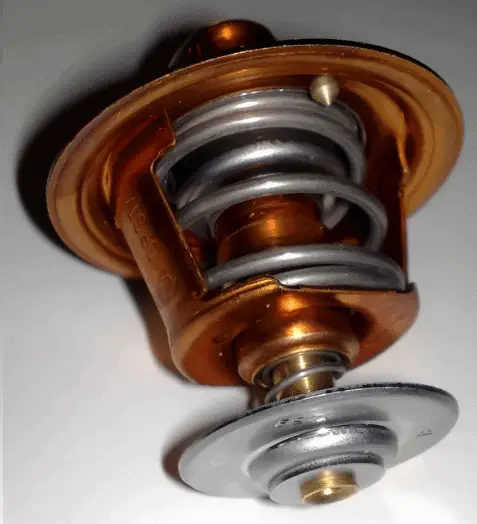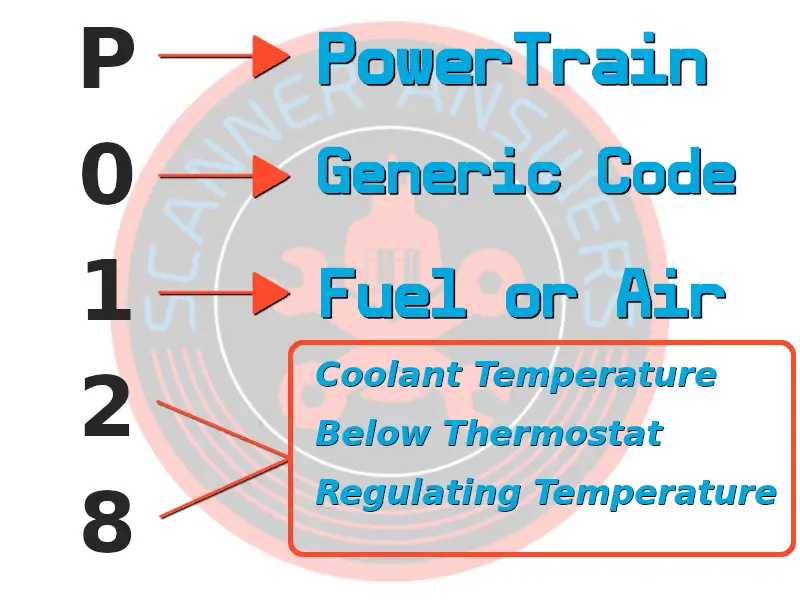
Meaning of P0128 Generic OBD2 Code
The technical definition of P0128 code is: Coolant Temperature Below Thermostat Regulating Temperature
This code is similar to P0125 and has something to do with a broken or failed thermostat. Read more about testing a thermostat.
What this means is the engine is unable to reach the proper operating temperature after starting the motor. The thermostat is like a door. It opens or closes to allow coolant to circulate inside the motor. The thermostat is close during cold starts to help the engine warm up. Once the motor is warm enough, the thermostat will open to allow the coolant to circulate while maintaining the required operating temperature.
For all intents and purposes, a P0128 code indicates the thermostat is stuck in the open condition.

Before reading further, I suggest spending three minutes to watch ThePeoplesGarage video with a quality explanation of why your car MIL may be on and showing this generic fault code.
What are the causes of P0128 OBD-II code?
The P0128 OBD-II code is almost always caused by a faulty thermostat.
The thermostat can fail for a variety of reasons. It might have something to do with age or high mileage, but one of the primary reasons is accumulated rust and debris in the thermostat.

Car manufacturers require coolant for several reasons. While the name ‘coolant’ is a bit misleading, this colored liquid is not meant to cool the motor (read more about engine coolant). In most cases, distilled water is enough to cool the motor even in the hottest summer months. The primary purpose of coolant is to provide constant lubrication to various internal parts. This prevents rust and hard deposits from damaging the motor and the radiator.
- Faulty thermostat
- Low engine coolant
- Broken Engine Coolant Temperature (ECT) sensor
If the coolant is not replaced or drained according to the recommended intervals, the lubricating properties will eventually fail or wear out. This leads to the accumulation of rust and debris, which will eventually damage the thermostat. Using tap water instead of distilled water will also cause problems in the long run. Getting oil in the coolant reservoir can also cause problems.
The code is also caused by low coolant levels, a faulty cooling fan, or in some cases a broken intake air temperature (IAT) sensor .
In order to prevent this DTC, make sure your vehicle is running on fresh coolant and replace when necessary. Your coolant should be replaced or “flushed” every 30,000 miles or 5 years.

What are the symptoms of P0128 DTC?
The good news is the P0128 OBD2 trouble code will not produce irregular symptoms like erratic idling and poor performance. However, it is common for the engine to take a longer time to warm up after cold starts. You will also notice the engine temperature needle dropping when driving at higher speeds along with a check engine light in the console.
- Heater won’t turn on or takes a long time to warm up
- Dashboard gauges show the engine temperature low
This is a moderate problem and depending on your climate, doesn’t require immediate repair.
How much does it cost to fix P0128 Fault Code?
There’s more good news!
Since this DTC is most likely triggered by a broken or stuck thermostat, replacing the part will only cost between $15 to $30 depending on the make and model of your vehicle (plus mechanic labor if you don’t do it yourself). Make sure to always insist on an OEM thermostat to avoid compatibility or performance problems later on!
Of course, it is advisable to drain and replenish the coolant when replacing the thermostat (since most of the old coolant will flush out anyway once the main hose is removed to access the thermostat). This “flush” can cost another 100$ if you take it to the shop.
-Mike